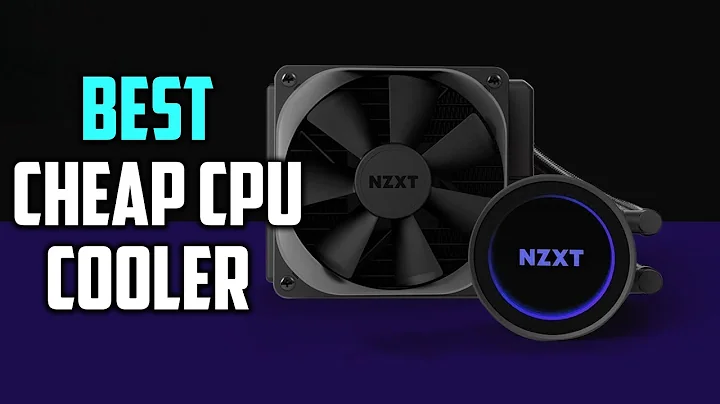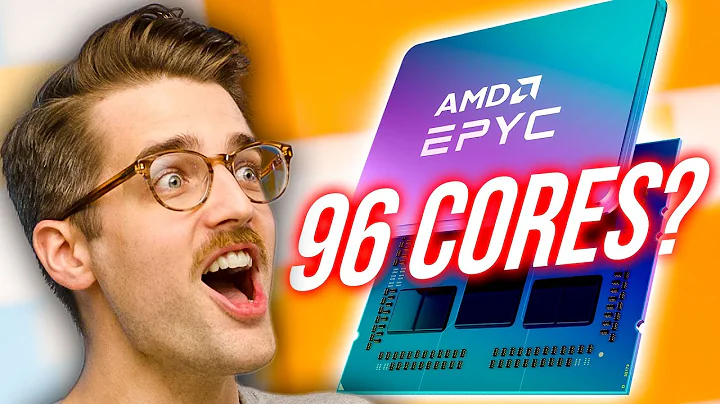Intel's Alder Lake Processors: A Game-Changing Hybrid Architecture
Table of Contents
- Introduction
- Overview of Alder Lake Processors
- Hybrid Architecture of Alder Lake
- Specifications and Pricing
- Gaming Performance
- Parallel Workflow Performance
- Single-Threaded Performance
- Power Consumption and Heat Output
- Packaging Design for Improved Cooling
- Z690 Chipset and Motherboards
- Conclusion
Introduction
In this article, we will dive into the latest information released by Intel regarding their upcoming Alder Lake processors. This highly anticipated release has sparked excitement and Curiosity in the tech community, as it represents a significant change in the way desktop processors operate. We will explore the hybrid architecture of Alder Lake, its specifications and pricing, gaming performance, power consumption, and more. So buckle up and get ready for an in-depth look at what Intel has in store for us with the Alder Lake processors.
🔥 Highlights:
- Intel's Alder Lake processors represent a make it or break it moment for the company.
- The hybrid architecture of Alder Lake combines high-performance and efficient cores.
- Alder Lake processors offer improved gaming performance and parallel workflow capabilities.
Overview of Alder Lake Processors
The Alder Lake processors mark a pivotal moment for Intel as they implement a new approach to desktop processing. This architecture utilizes a combination of high-performance cores and efficient cores to balance workloads and enhance processing speed. The performance cores handle priority loads, such as gaming, while the efficient cores focus on background tasks. Additionally, the hybrid architecture allows for simultaneous usage of all cores during demanding multi-core tasks like rendering.
Pros:
- The hybrid architecture offers a balance between high-performance and power efficiency.
- Simultaneous usage of cores can significantly improve multi-core performance.
Cons:
- The performance of efficient cores may not match that of traditional cores.
Hybrid Architecture of Alder Lake
The key innovation of Alder Lake lies in its hybrid architecture, which combines performance cores (P-cores) and efficient cores (E-cores). Intel claims that the E-cores, despite their focus on efficiency, can deliver performance levels similar to the cores found in Intel's previous 10th generation CPUs. Notably, the P-cores can boost single-threaded performance by a significant 28% or 16% compared to the previous generation.
Pros:
- Hybrid architecture offers a flexible and efficient approach to processing workloads.
- E-cores can deliver impressive performance despite their focus on efficiency.
Cons:
- Some processors may not feature the P and E core layout.
Specifications and Pricing
Intel's upcoming Alder Lake processors are set to hit the market in the coming weeks, with the i9, i7, and i5 CPUs leading the pack. The flagship i9 12900K boasts eight performance cores with Hyper-threading enabled, along with eight single-threaded E-cores, providing a total of 24 processing Threads. The frequencies of the performance and efficient cores vary, with turbo boost max enabled exclusively for the performance cores.
Pricing for the new processors represents a premium over previous generations. The i9 12900K is priced at $590, while the i7 12700K ranges from $385 to $410, offering competitive pricing when compared to AMD's Ryzen 9 5900X. The i5 12600K, with its six performance cores and 12 processing threads, hits below the $300 mark.
Pros:
- Impressive specifications with a wide range of performance options.
- Competitive pricing in comparison to AMD's offerings.
Cons:
- Pricing may deter budget-conscious consumers.
- Lower-end Alder Lake products have yet to be revealed, leaving a gap in the product stack.
Gaming Performance
Gaming performance is an essential aspect when evaluating processors, and Alder Lake aims to deliver significant improvements in this area. Compared to Intel's 11th generation Rocket Lake CPUs, the Alder Lake processors are expected to see notable boosts across various titles. However, it is crucial to note that these benchmarks are HAND-picked by Intel and should be taken with a grain of salt until independent reviews and benchmarks are available.
Pros:
- Expected improvements in gaming performance compared to previous generation Intel CPUs.
- Developers and the Windows scheduler will likely optimize further for the new core layout.
Cons:
- Intel's benchmarks may not completely reflect real-world gaming performance.
Parallel Workflow Performance
Parallel workflow tasks, such as video editing and rendering, can benefit greatly from the hybrid architecture of Alder Lake. Intel showcases scenarios where editing in Adobe Premiere and exporting the final video occur simultaneously, aided by the combination of P-cores and E-cores. This results in faster processing times for both tasks, highlighting the potential efficiency of the new architecture.
Pros:
- Alder Lake's hybrid architecture excels in parallel workflow tasks.
- Intel's showcased examples demonstrate significant performance gains.
Cons:
- Further testing and real-world benchmarks are needed for a comprehensive evaluation.
Single-Threaded Performance
While multi-threaded performance is a crucial metric, single-threaded performance remains vital for certain applications. Intel's claims suggest substantial gains in single-threaded performance compared to their 11th generation CPUs. This improved single-threaded performance is pivotal in competing with AMD's current offerings.
Pros:
- Intel focuses on improving single-threaded performance in Alder Lake.
- Enhanced single-threaded performance is crucial for specific tasks and applications.
Cons:
- Independent benchmarks are necessary to validate Intel's claims.
Power Consumption and Heat Output
One of the concerns surrounding Alder Lake is its power consumption and heat generation. Intel's new approach results in higher power consumption compared to their previous CPUs. The TDP values no longer accurately reflect the power requirements, as the rated power consumption has shifted from the nominal value to the maximum turbo power value. This change raises questions about the effectiveness of cooling solutions and raises platform costs.
Pros:
- Intel's increased power consumption results in improved performance.
- The new packaging design aims to improve heat dissipation.
Cons:
- Higher power consumption can lead to increased heat output and higher cooling requirements.
- The change in TDP values can cause confusion and complicate purchasing decisions.
Packaging Design for Improved Cooling
Intel has revised the packaging design of Alder Lake CPUs to address the increased heat output. The use of a thinner, more efficient S-TIM and a thicker integrated heat spreader (IHS) allows for better heat distribution. This design change aims to mitigate thermal issues associated with the processors' higher power consumption, providing improved cooling performance.
Pros:
- Revised packaging design enhances heat dissipation capabilities.
- Thicker IHS enables better heat distribution.
Cons:
- Effectiveness of the revised packaging design is yet to be tested and confirmed.
Z690 Chipset and Motherboards
The release of Alder Lake processors coincides with the introduction of the Z690 chipset and accompanying motherboards. The new chipset supports 16 PCIe Gen 5 lanes for add-in cards, while the main NVMe storage slot remains on a PCIe Gen 4 link. Motherboards will support either DDR4 or DDR5 memory, offering compatibility with both, but not simultaneously. The Z690 chipset also introduces improvements to the USB port capabilities, SATA ports, and Wi-Fi connectivity.
Pros:
- Introduction of the Z690 chipset brings new features and improved connectivity options.
- DDR4 and DDR5 memory compatibility caters to a wide range of consumer needs.
Cons:
- DDR4 and DDR5 are not simultaneously supported on the same motherboard.
Conclusion
The upcoming release of Intel's Alder Lake processors promises an exciting new chapter in desktop processing. The hybrid architecture, improved gaming performance, and parallel workflow capabilities showcase Intel's determination to compete with AMD. However, concerns regarding power consumption, heat output, and compatibility should be carefully considered. As independent benchmarks become available, consumers will gain a clearer understanding of Alder Lake's true performance capabilities. Stay tuned for our full review, where we will address your questions and concerns and provide in-depth analysis.
💡 Highlights:
- Alder Lake's hybrid architecture represents a major shift in desktop processing.
- Improved gaming and parallel workflow performance sets Alder Lake apart.
- Power consumption and heat output raise concerns but promise enhanced performance.
 WHY YOU SHOULD CHOOSE TOOLIFY
WHY YOU SHOULD CHOOSE TOOLIFY































